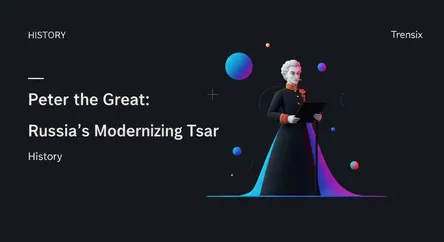History
Peter the Great: Russia's Modernizing Tsar

Discover Peter the Great, the transformative tsar who dragged Russia into the modern era with sweeping reforms, military expansion, and a new capital.
What is it?
Peter I, known as Peter the Great, was the Tsar of Russia from 1682 to 1725. He is widely recognized as one of Russia's most influential leaders, responsible for its transformation from a secluded tsardom into a major European power. Possessing immense energy and a vision for a modern Russia, he implemented extensive reforms across all areas of society. Heavily influenced by his travels in Western Europe, known as the Grand Embassy, Peter introduced modern technology, reorganized the army and established the first Russian navy. One of his most famous achievements was the founding of St. Petersburg in 1703, which became Russia's new capital.
Why is it trending?
Peter the Great remains a figure of intense historical interest due to the sheer scale and impact of his reforms. His reign represents a pivotal turning point in Russian and world history, marking Russia's entry onto the European stage as a dominant military and political force. The cultural revolution he led, which included modernizing dress and social customs, created a fundamental shift in Russian identity that is debated to this day. His forceful, often brutal, methods and larger-than-life personality continue to fascinate historians and the public, making him a perennial subject of books, documentaries, and discussions about leadership and nation-building.
How does it affect people?
The legacy of Peter the Great profoundly shaped the future of Russia and its people. His military reforms secured the nation's borders and gave it access to the Baltic Sea, boosting trade and international influence. The establishment of new educational and scientific institutions laid the groundwork for Russia's intellectual development. However, his policies also had a harsh impact. The construction of St. Petersburg and his numerous wars cost countless lives. His reforms often created a wider gulf between the westernized nobility and the traditional peasant masses, a social cleavage that would have consequences for centuries to come. His creation of a powerful, centralized state set a precedent for autocratic rule in Russia.